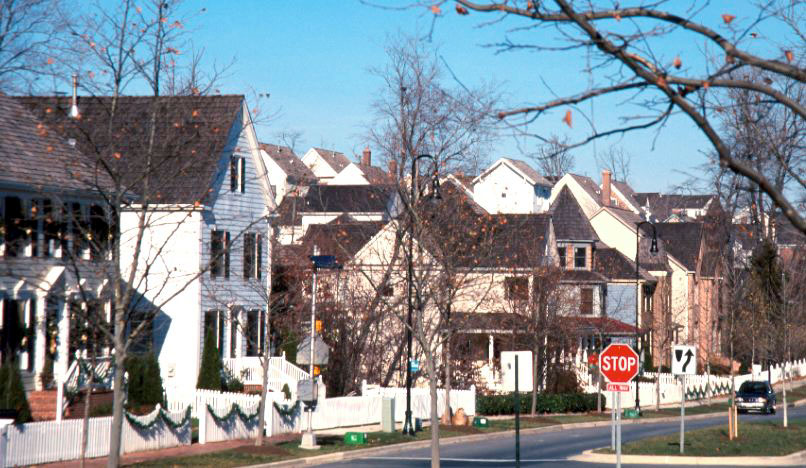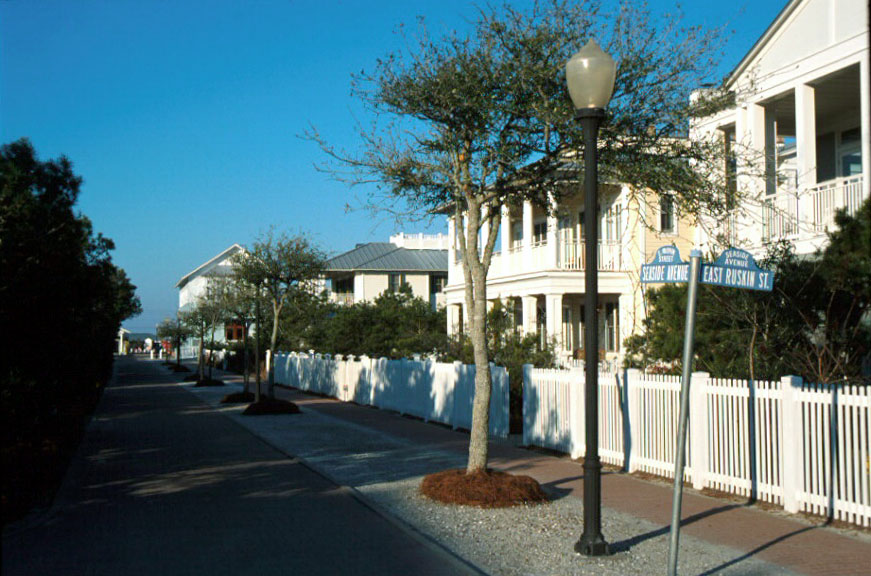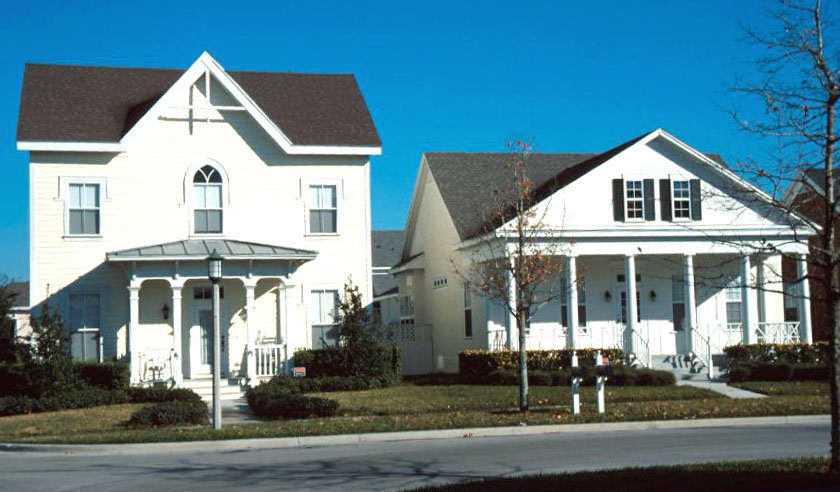They say all New Urbanist developments look the same. So there I was, lost among the dreams all one dream, walking past miles of cheerful porches. Children playing, people carrying cups of sugar to their neighbors, community feeling oozing through every tasteful window treatment. Cars drove slowly, there were no visible garages but cars were parked along the sheltered sidewalks. Good fences made good neighbors. Everyone was happy and no one felt excluded and all the dogs were friendly, and all the children and all the real estate prices were above average. The houses came from old James Stewart movies; the cars were silent and non-polluting; children ran together in their games. No one was poor, no one was too different, no one was isolated. Everyone worked nearby, everyone walked to shop in cheerful Mom and Pop stores, everyone went to town committee meetings. Everyone paid their taxes, no one moved away.
Didn't anyone use a goat to keep their lawn short? Have a shocking pink swimming pool? A porch with martini shakers instead of lemonade? The town agreements mandate house colors and fence patterns; where were the sly maneuvers straining at those definitions? Were there sullen children and crochety elders? Were there vast and varied virtual spaces opening out from inside those similar houses, or were they all playing the same computer game?
The landscapes do differ. House styles vary. Clicheed as they may be, they have some regional touches. Kentlands and King Farms, only a few miles apart, look and feel different despite their similar styles of building. In part this is due to the different way lots were assigned to individual developers in the two communities, leaving King Farm with larger tracts of more similar buildiings. But I admit that discerning these differences requires a certain finesse. So the dream goes on, all one big happy family?



(c) David Kolb, 1 August 2001